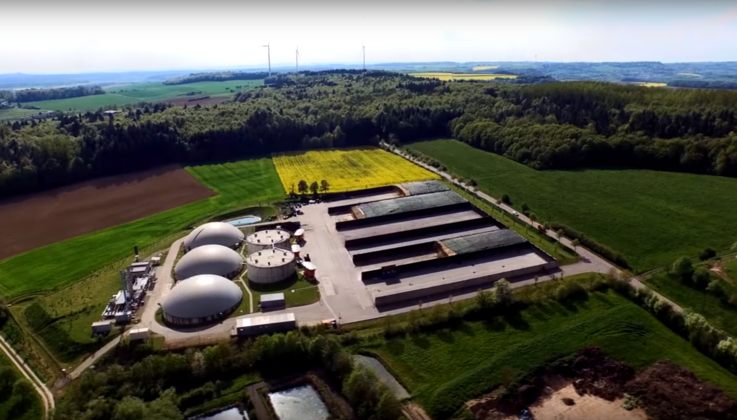
Climate protection experts
Whenever organic material decays, it produces carbon dioxide and methane. Nature has its own methods for capturing these gases. Evonik does too
Beeches are one of nature’s masterpieces. They are undemanding, requiring less light than other trees for photosynthesis and consuming relatively little water. Over a period of 80 years, a single beech stores more than one ton of carbon, which it extracts from the carbon dioxide in the air. This makes the tree a natural protector of the climate. The SEPURAN® Green membranes from Evonik are similarly undemanding. They don’t need water or chemicals. Moreover, they last for many years and also extract climate-damaging gases from the air. The currently installed SEPURAN® Green systems have the same effect every year as a forest of two million beeches has in 80 years.
Fibers look like spaghetti
SEPURAN® Green is used wherever carbon dioxide (CO2) and methane (CH4) appear together in gases. The gas separation principle is initially simple, because CO2 and CH4 molecules aren’t the same size. When biogas is chan neled into the modules, the carbon dioxide molecules, which are smaller than the methane ones, escape through cavities in the membrane layer. The larger CH4 molecules pass through the module until the methane eventually comes out with a purity of almost 100 percent. The CO2 is also available in a highly concentrated form suitable for further processing. The modules contain small fibers. The fibers’ shape and color make them look like spaghetti at first glance. However, they are actually hollow in the middle, which makes them more like macaroni.
Benefit for the climate
But no matter whether they are more like spaghetti or macaroni, SEPURAN® Green fibers benefit the climate. CO2 is considered to be the main cause of climate change. However, a CH4 molecule is 25 times more damaging to the climate than a carbon dioxide molecule. Nonetheless, these two gases also occur naturally. They are released wherever organic material decays in the absence of oxygen. Large amounts of these gases are released in concentrated form in agricultural slurry silos, in sludge treatment plants, and in many waste processing facilities. The agents are archaea—single-celled organisms that produce CH4 and CO2 by decomposing organic material. These gases intensify climate change if they are released into the atmosphere before they can be used. However, if they are captured, separated, and utilized, they serve as an inexpensive and sustainable source of energy and materials.



